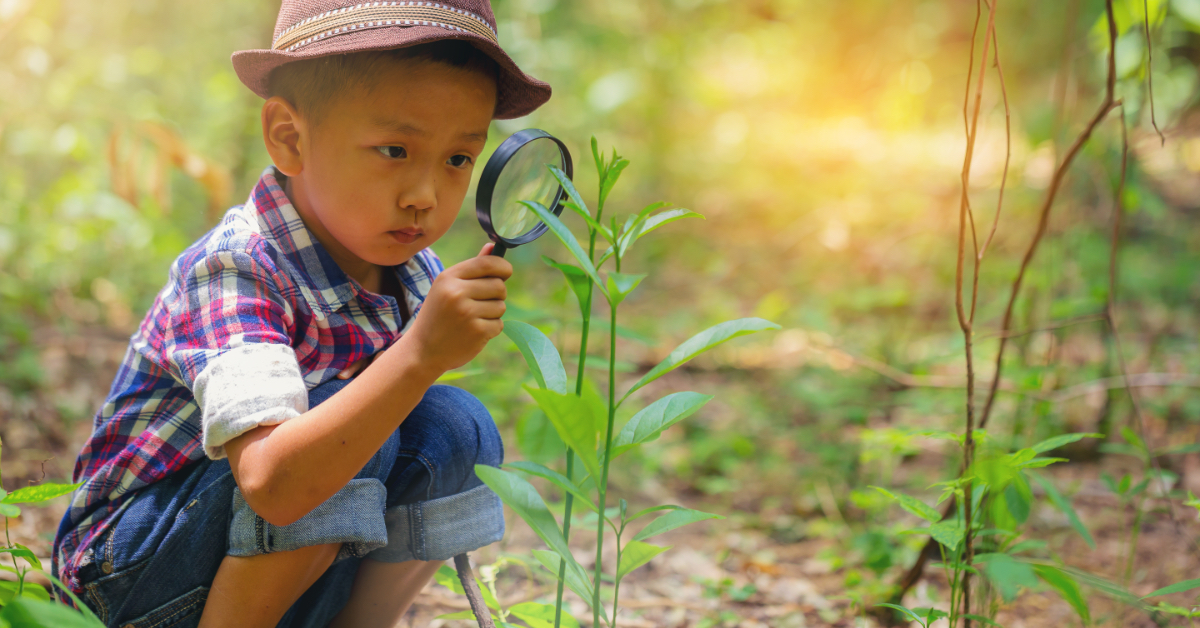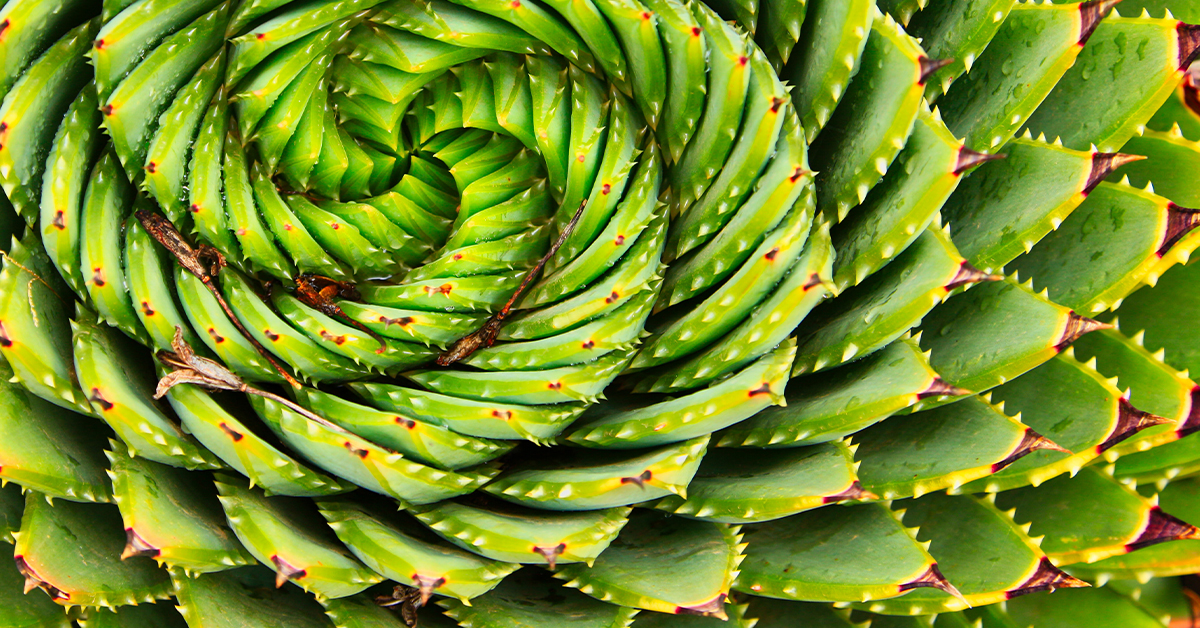
“Nature’s great book is written in mathematics.”
– Galileo Galilei
While certainly not the first, Galileo was one of the most important voices to give credence to the incredible value of using math to learn about the world around us. Everywhere we look, mathematical principles follow the laws of nature.
From the symmetry of a flower to the rings in a tree trunk, math concepts illustrate the dynamics of nature. That’s why taking the math classroom outdoors can make building math skills fun and engage students with multisensory learning.
There is no shortage of fun math activities in nature. Natural math activities span a range of ability levels, from learning elementary addition and subtraction to refining high school math skills. Learning math is so much more than just solving math problems and memorizing math facts. Going outdoors and discovering math in nature will activate your students’ whole brains and help them connect with math in an entirely new way.
Exploring Mathematical Concepts in Natural Settings
Examples of math concepts can be found virtually anywhere, and math topics abound in natural settings. When it comes to connecting math education to nature, the key is looking for math facts that are tangible and appropriate to your students’ mathematical skill level. While high school students might understand and appreciate the right angles found in a salt crystal, a first-grade student would probably be more comfortable practicing addition by counting acorns.
This is especially true if the activities are integrated into everyday tasks such as feeding the family pet or collecting eggs from the family chicken coop. Activities like calculating a pet’s age in human years, determining the distance of your daily dog walk, or converting units of measurement when preparing a pet’s medication can make math come alive for kids and help them see the real-life applications of concepts that can otherwise seem abstract.
Whether it’s on a hike or at a playground, here are a few activities that can help your students identify math in their natural surroundings:
Symmetry
Symmetrical shapes are ubiquitous in biology. Leaves, mammals, starfish, and more all contain symmetrical properties. Moreover, students can classify living things based on the types of symmetry they observe in them. One example is contrasting the rotational symmetry of a starfish with the bilateral symmetry of an oak leaf.
Shapes
Students can also identify different shapes in nature. It’s not quite true that nature has no straight lines, although most lines do curve a little. But an armadillo makes a sphere shape, turtle shells often look like circles, and beehives contain a multitude of hexagons. Using your imagination, finding geometrical shapes in nature it isn’t too difficult.
Counting
Activities that utilize counting are engaging for young math learners and help them develop number sense. Ask one student to go out and collect five pine cones, ten sticks, or any other small quantity of common objects. Then, sit together and count the items they find. A pine cone, for example, can be analyzed further by counting the number of scales it contains.
Measurement
Measuring activities help students gain a sense of proportion about the world around them. For example, you might ask your students, “How long is the average length of a stick in your backyard?” To find out, they’ll have to collect a bunch of sticks, measure their lengths, and compute the averages. Then, they can compare the sizes of the sticks to other items. For example, how much longer is the average stick compared to the average rock? High school students can even use their knowledge of statistics to determine if such measurements are normally distributed.
Estimating
Estimating activities build on measuring activities to help students use their quantitative math skills and their imagination to draw reasonable conclusions. You might ask, “How many beetles are there in the garden?” Or, “How many pine cones are there in the forest?” Have students count how many of each item they find in one area and extrapolate the answers by using multiplication. Let them know that there isn’t a single precise, correct answer but that they can get close by applying the principles of estimation.
Weather and Meteorology
Weather is a rich source of opportunity for studying math in nature. Show your students how to use a thermometer to measure temperature and a hygrometer to measure humidity, and ask them to take regular measurements over time (without an app). Show them how to measure rainfall properly and how to use math to make weather predictions. For high school students, show them the formula for converting Fahrenheit to Celsius and then give them a few Fahrenheit temperatures to convert. Once they’ve mastered that formula, give them some Celsius temperatures to convert.
Trigonometry
Students can practice using trigonometry to calculate the heights of trees. Find a tree that stands at a right angle to the ground. Ask students to measure the length of their shadows and the length of the tree’s shadow. By calculating the ratio of their heights to their shadows, students can determine the height of the trees since the ratio will be the same.

Fractals
Hunting for fractals in nature is fun. These fascinating shapes are everywhere in the natural world, from mountain ranges to tree branches to fern leaves. Although fractal geometry is advanced mathematics, the idea of self-similarity is pretty accessible, even to young students.
Space
Remind kids that outer space is part of the natural world, too, and that they can observe it every night. While there may not be a solar eclipse every weekend, students can track the moon’s movements and phases to understand better periodic motion (motion that’s repeated over equal intervals of time).
Playing Math Games In Nature
Engaging in enjoyable math activities and games helps students associate math with fun. This is especially true if those activities and games are outside. Many games that work in the math classroom work well outside, too.
Here are a couple of fun ways to connect math and the outdoors:
Math Twister
Math Twister is similar to regular Twister, except instead of colors, students have to touch numbers drawn on the ground when you give them math problems to solve. For example, if you say, “Five plus seven!” they must touch the number 12 on the ground.
Navigation Games
Navigation games are also fun and can help students practice their geometry skills. Start by hiding a ball, and then split the students into two teams. Give instructions about how to find the ball, like “Walk north until you reach the stream and turn left.” The first team to find the ball wins. This game can, of course, be modified for smaller classes so that the first student to find the ball wins. You will need at least two players, however.
Almost any physical education activity can be done outside, and it’s fun to incorporate mathematics into physical fitness. For example, have students time how long it takes to jump or run a specific distance, then show them how they can calculate their velocity using the formula V=d/t (velocity equals distance divided by time).
Challenges with Studying Math in Nature
Like anything else in education, taking the math classroom outdoors can come with challenges.
Because nature is different wherever you live, the sorts of math activities you might find on the prairie in Kansas are far different from those you might find on the beach in Hawaii. As a result, it’s necessary to adapt these activities to your local surroundings. Consider going to a national park or outside your home state to add some variety.
Be mindful of outdoor dangers and risks. Wild animals, like snakes or wolves, are obviously a concern, but so are plants like poison ivy or thorn bushes. If you or your kids are concerned about what dangers might be nearby, try limiting your nature math activities to a specific area that you know is safe. Perhaps even use a private garden if it has the necessary resources.
Remember that classroom time spent outdoors is still classroom time. Don’t let students get distracted or carried away by the change of scenery.
The Joy of Learning Math Outdoors
Spending all day indoors is not ideal for our physical or mental health, yet it’s an all-too-common scenario in today’s world. Moving the classroom outdoors offers a refreshing change, especially when it comes to abstract subjects like math.
Taking formulas, functions, and equations outside makes math more engaging by showing its relevance beyond textbooks. Students who participate in outdoor math activities are not only more likely to enjoy math; they are also more likely to understand and appreciate it.
For more inspiration related to learning in nature, watch The Demme Learning Show’s episode “How Saving Chickens Saved Me!”




Leave a Reply